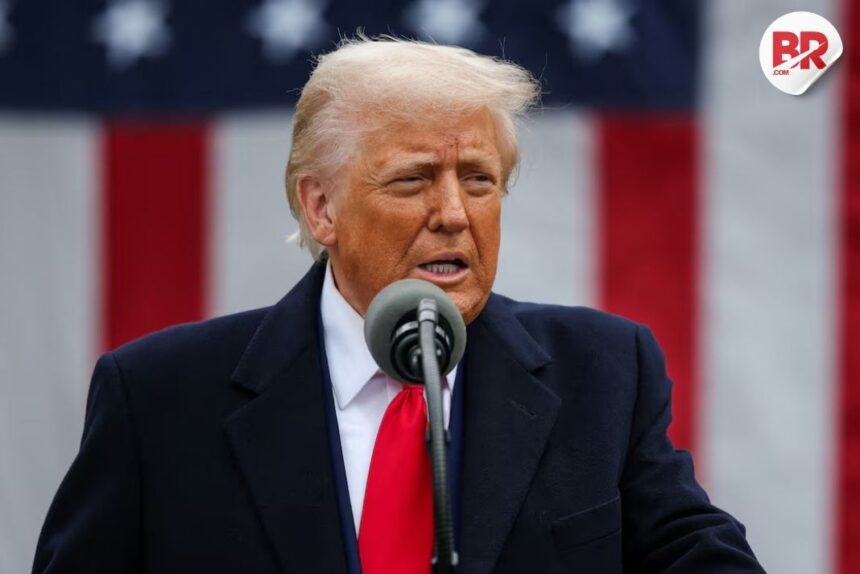
Asian stock markets dropped sharply on Wednesday after the United States imposed new tariffs, including a huge 104% tax on Chinese imports. Japan’s main stock index, the Nikkei 225, fell nearly 4%, and other markets like South Korea, Australia, and New Zealand also went down.
The new tariffs took effect after midnight (Eastern Time) in the U.S. These sudden and steep increases have left investors confused about what President Donald Trump will do next in the ongoing trade war. On Tuesday, the U.S. stock market also suffered:

- The S&P 500 lost 1.6%
- The Dow Jones fell by 0.8%
- The Nasdaq dropped 2.1%
These tariffs could increase prices for American consumers and slow down the economy. Economists worry that if the tariffs stay in place for a long time, they could push the U.S. into a recession. However, if President Trump reduces them soon through negotiations, the damage might not be as severe.
Read More: Chinese Premier Responds to Trump’s 104% Tariffs: ‘China Is Ready to Handle It’
Impact on Bangladesh:
Bangladesh, the world’s second-largest garment exporter after China, is also affected. The U.S. has added a 37% tariff on Bangladeshi clothing exports. Last year, Bangladesh exported clothing worth $7.34 billion to the U.S., its biggest market. Now, American buyers are pausing orders, and competitors like India and Pakistan could take over. Bangladesh has asked for a 3-month delay in the tariff’s application to prepare for the changes.
This is worrying for Bangladesh’s economy, as the garment industry employs around 4 million workers—mostly women—and contributes to 80% of the country’s exports.
South Korea Responds:
South Korea, another country affected by the new U.S. tariffs, announced a $2 billion support plan to help its car industry. The government will provide cheap loans and subsidies for electric vehicles to help Hyundai, Kia, and auto parts makers. The U.S. has placed a 25% tariff on South Korean cars and parts. Last year, South Korea exported $34.7 billion in cars and $8.2 billion in parts to the U.S.
New U.S. Tariff List:
President Trump’s new tariff plan increases taxes on almost all U.S. trading partners by at least 10%, with some going much higher. Some examples:
- China: 104%
- Madagascar: 47%
- Vietnam: 46%
- Taiwan: 32%
- South Korea: 25%
- Japan: 24%
- European Union: 20%
- Lesotho (a small African country): 50%
These new tariffs build on previous ones. For instance, the 104% rate on China includes earlier tariffs of 20% and 34%, plus a possible additional 50% if China retaliates.
Also See: Trump Plans New Tariffs on Medicines – What It Means for India
Market Reaction Around the World:
Markets in Asia continued to fall on Wednesday morning:
- Japan’s Nikkei 225 dropped more than 3.9% before stabilizing at 3.5% down.
- South Korea’s Kospi index fell 1% to 2,315.27.
- Australia’s S&P/ASX 200 declined by 2% to 7,359.30.
- Stocks in New Zealand also fell.
Earlier, there had been gains in some markets—Tokyo was up 6%, Paris 2.5%, and Shanghai 1.6%—but those gains were wiped out after the tariffs kicked in.
Canada Joins the Fight:
In response to the U.S. tariffs, Canada announced its own countermeasures. Starting Wednesday, Canada will place a 25% tariff on U.S. cars that don’t meet the standards of the USMCA (North American trade agreement). Canada is also supporting its auto industry and making exceptions for some areas, like Campobello Island in New Brunswick.
Also See: US Treasury Chief: China’s Tariff Strategy Puts Global Trade at Risk
Summary:
The U.S. has started a new round of heavy tariffs on imports, especially targeting China with a 104% tax. This has caused stock markets to fall around the world. Countries like Bangladesh and South Korea are worried about how these tariffs will hurt their industries, and Canada has responded with its own tariffs. Economists warn that these trade tensions could lead to a global economic slowdown if not resolved soon.












